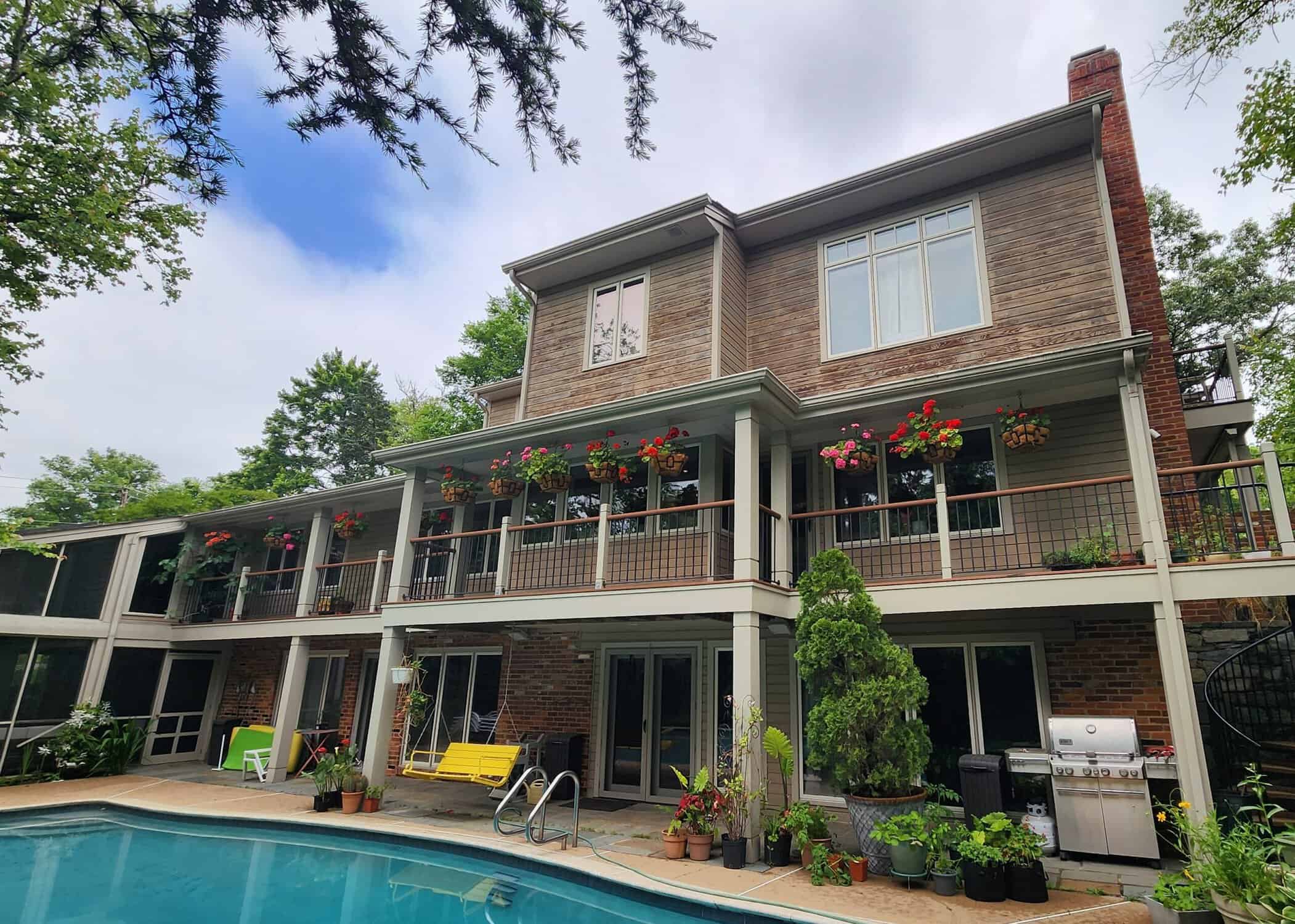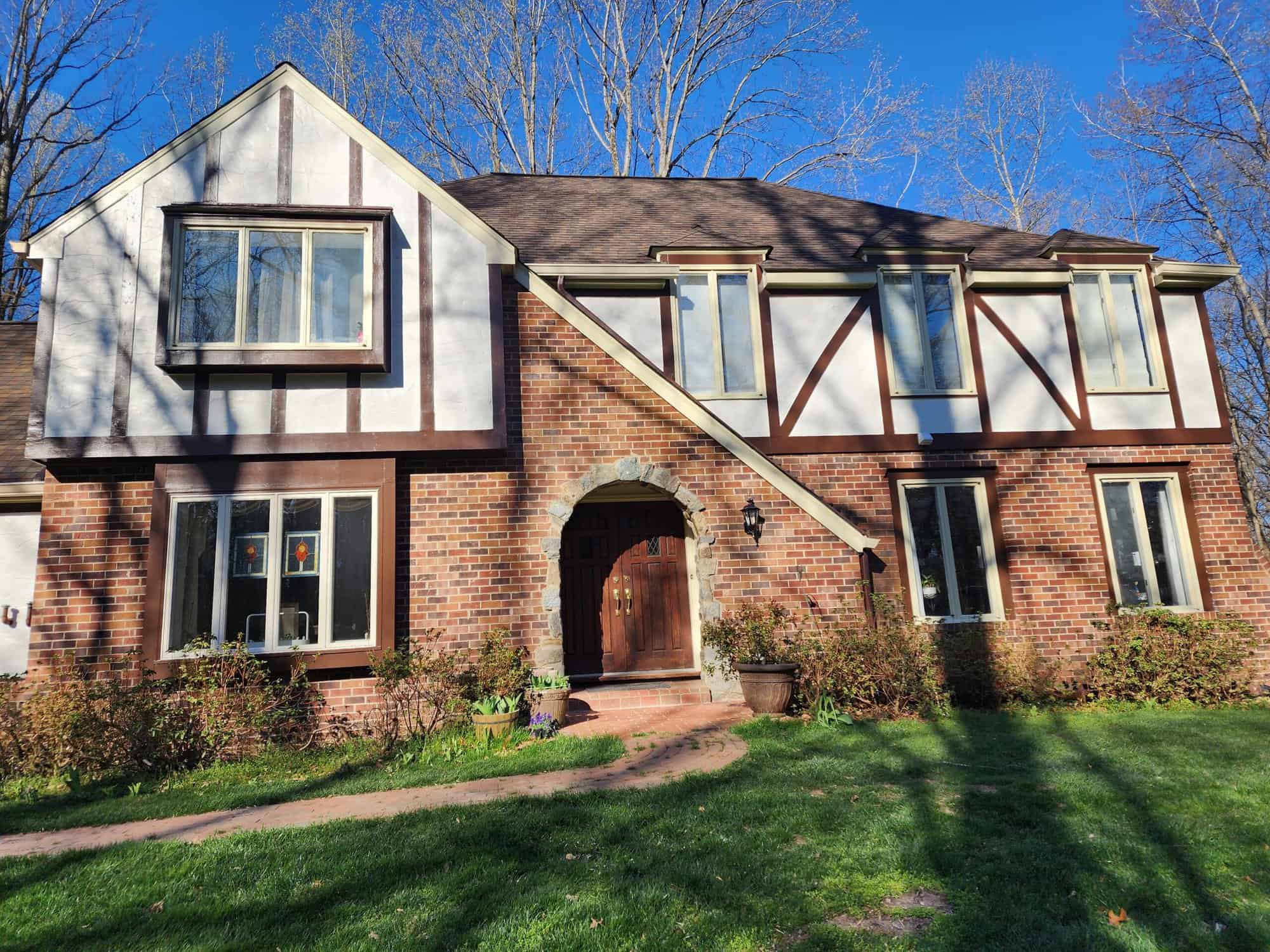Painting your home exterior can completely refresh how your house looks and protect it too. But getting the timing wrong? That’s a shortcut to cracked paint, faded color, and a whole lot of regret.
If you’re in Alexandria, VA, you already know how moody the weather can get. One week it’s sunny and breezy, the next you’re getting alerts about a tropical storm warning or sudden thunderstorm.
We’ve seen it all: exterior paint project ruined by high humidity, wood siding warped from trapped moisture, and finishes dulled by unexpected gusts of wind that sent dust flying right into fresh coats. This guide breaks down the weather scenarios you should flat-out avoid when it comes to painting your home exterior, the last thing you want is to redo it all over again.
Key Takeaways:
- Avoid painting after rain or pressure washing. Surfaces need at least 48 hours to dry fully to prevent trapped moisture and peeling.
- Skip hot, humid days. Paint dries too fast in heat or too slow in humidity, leading to uneven finishes.
- Cold weather affects paint adhesion. Don’t paint if temps drop below 50°F, especially in early mornings.
- Wind can ruin your fresh coat. Dust and debris can stick to wet paint, and gusts make spray painting unpredictable.
- Always check for stable forecasts. Even a dry morning can turn stormy—watch for local alerts like thunderstorm or tropical storm warnings.

1. Wet Surfaces After Rain or Pressure Washing
It doesn’t have to be raining for water to ruin a paint job. If your siding, stucco, or masonry still holds moisture from a recent rain or even pressure washing, that moisture can get trapped under the new coat.
What happens next? Mold, mildew, peeling paint—and a finish that just doesn’t hold up.
Moisture also causes adhesion problems. It can prevent the primer or paint from sticking properly to the wall, especially around windows, clapboards, and trim. And if you’re spray painting, it might not show immediately, but within a few weeks, those patches can start to bubble.
Pro Tip: Wait at least 48 hours after rain or cleaning. Even better, use a moisture meter if you’re not sure. If you’re unsure, avoid painting that day. And remember, even after pressure washing, siding can take longer to dry than you think, especially if it’s shaded.
2. Hot, Humid Days That Feel Like a Sauna
You’d think summer would be the best time for painting your home exterior, but extreme heat or humidity can mess things up just as much as rain. When it’s hot, especially during a heat wave, latex paint dries too quickly. That may sound good, but it’s not—fast-drying paint can leave lap marks and uneven patches that are tough to fix once they’ve cured.
Humidity is another issue. It keeps moisture hanging in the air and makes drying paint feel sticky, especially on wood or metal. That means longer dry times and higher risk of dust and debris settling into the finish.
Pro Tip: Keep an eye on the local weather radar. Aim for days in the 60s to 80s with humidity under 70 percent. Avoid the hottest part of the day and don’t paint in direct sunlight. Start with the shaded side of your house and work around it.
If you’re unsure when to get started or want a quick seasonal overview, check out our Why Spring Is the Best Time for Exterior Painting post.
3. Freezing Temps or That Sneaky Early Morning Frost
Some people think if it’s dry, it’s good enough to paint. Not true. Cold weather can ruin even the best prep work. Paint gets thick, doesn’t spread well, and might not cure correctly. You might even notice it looking chalky, or worse, flaking within a season.
Most residential exterior painting projects fail in colder temps not because of the paint itself, but because the surface and air temperature aren’t warm enough for proper adhesion. And once that cold creeps into your siding or trim, it takes a while for the surface to warm up, even if it’s sunny outside.
Pro Tip: Don’t paint when the air or surface is below 50°F. That includes early mornings when frost or dew might still be hanging around. Some paints say they work at 35°F, but be careful—those require perfect conditions. If you see a winter storm warning or frost advisory, definitely reschedule.
4. Windy Days That Seem Innocent Until Your Brush Hits the Wall
Wind is a sneaky paint-wrecker. A breeze might feel refreshing, but when you’re painting your home exterior, it can blow dust, pollen, leaves, and even small debris straight into your wet coat. This is especially a problem if you’re spray painting or using a paint sprayer.
High winds can also make it unsafe to be up on a ladder or scaffold. And they can dry your paint too fast, just like extreme heat.
Pro Tip: Check your local weather station for wind speeds. Anything over 10–15 mph? Probably best to reschedule. If you’re near the water and a coastal flood advisory is active, even light wind can bring extra moisture with it.
5. Forecasts With Unstable or Stormy Weather
In Alexandria, you might get an afternoon thunderstorm out of nowhere. We’ve seen paint jobs ruined when clouds rolled in after a perfectly dry morning. Thunderstorms, tornado warnings, or even just the pressure drop before a storm can cause sudden humidity changes. That affects how paint dries, especially on large exterior walls, trim, or around sash windows.
And don’t forget about storms on the radar. Even if it’s dry when you start, paint takes time to cure, and a surprise rainstorm can turn your afternoon project into a streaky mess.
Pro Tip: Always check the full forecast, not just the morning conditions. Look out for thunderstorm watches, storm trackers, and radar updates. If anything sketchy pops up, postpone your project. It’s not worth the risk.
Need help choosing the right paint formula for weather swings? Here’s our breakdown of exterior paint types that walks through what works best depending on the season and surface.
6. Skipping Prep Just Because the Weather Looks Good
Even on the perfect day, skipping proper prep can make your paint job fail. Flaking lead paint, old caulk, or dusty siding won’t hold new paint no matter how nice the weather is. And don’t forget surfaces like vinyl siding, wood, and metal—each has different needs when it comes to primer and sanding.
Pro Tip: Always clean first—use pressure washing for siding, a scraper and sandpaper for flaky areas, and caulk for any gaps or cracks. Remove all dust and debris. Use masking tape to protect windows and glass edges. If you’re unsure where to start, check our guide to selecting the best exterior paint colors—there’s more in there than just color advice.

Final Thoughts on Timing and Weather in Alexandria, VA
Painting your home exterior is a great way to refresh your space and protect your investment. But doing it in the wrong weather? That’s a fast-track to a do-over. From heat and humidity to wind, rain, or freezing temps, the right conditions matter more than most people realize. Alexandria’s unique mix of Atlantic hurricane season threats, coastal wind, and spring storms means it pays to plan ahead.
Whether you’re a weekend warrior or looking to hire experienced exterior painters in Alexandria, VA, timing, prep, and product choice all go hand in hand.
Here’s how JC Custom Painting LLC makes painting simple and worry-free:
- Free estimates with clear, upfront pricing—no surprises
- Professional prep work: pressure washing, scraping, sanding, and priming
- High-quality, weather-resistant paints suited for Virginia’s climate
- Friendly, punctual painters who respect your home
- Local knowledge of Alexandria weather and how it affects your home’s exterior
- Full cleanup after every project and quality checks before we leave
We proudly serve homeowners in Gainesville, Stafford, Fredericksburg, VA, and surrounding areas.
Ready for a home that looks as good as it’s protected? Call 571-575-6818 for your FREE estimate today!

